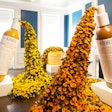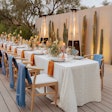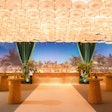Judging by the displays at the New York International Auto Show at the Javits Center, it's clear that carmakers are a crafty bunch. After they cleverly designed their cars to appeal to how potential buyers perceive themselves, the automakers created displays with all sorts of themes—modern, futuristic, sporty—to help showgoers envision themselves in a brand new car.
Toyota appealed to buyers interested in the future of electric cars with its Prius, a gas- and electric-powered hybrid car displayed on a round platform surrounded by shiny, white undulating panels. The words "hybrid," "synergy" and "drive" were printed on the panels, and bundles of plastic fiberoptic wire flanked the sides of the round platform to look like a space-aged garden.
Buyers attracted to clean, modernist looks of a boutique hotel bar would feel at home in Lincoln's display, with its heavy black counters paired with chrome and black bar stools. Behind one counter, white-framed video screens displayed images of moving parts of a car, and the floor featured a repeating pattern of the Lincoln logo.
The Austin Powers-mobile, also known as the Mini, angled for the young, affluent crowd. A giant "Mini" neon sign marked the space, and featured fun elements like a vending machine that dispensed information booklets, and a video monitor played clips of The Italian Job, a Michael Caine movie that featured the Mini Cooper in a getaway scene. (The car will make another star turn in the new Italian Job remake.)
The rugged, active types—or those who like to appear that way—were the target for Range Rover. Its booth used tall columns covered with rocks to displayed its SUVs, which were loaded down with a bike and kayak and splattered with mud.
—Suzanne Ito
Toyota appealed to buyers interested in the future of electric cars with its Prius, a gas- and electric-powered hybrid car displayed on a round platform surrounded by shiny, white undulating panels. The words "hybrid," "synergy" and "drive" were printed on the panels, and bundles of plastic fiberoptic wire flanked the sides of the round platform to look like a space-aged garden.
Buyers attracted to clean, modernist looks of a boutique hotel bar would feel at home in Lincoln's display, with its heavy black counters paired with chrome and black bar stools. Behind one counter, white-framed video screens displayed images of moving parts of a car, and the floor featured a repeating pattern of the Lincoln logo.
The Austin Powers-mobile, also known as the Mini, angled for the young, affluent crowd. A giant "Mini" neon sign marked the space, and featured fun elements like a vending machine that dispensed information booklets, and a video monitor played clips of The Italian Job, a Michael Caine movie that featured the Mini Cooper in a getaway scene. (The car will make another star turn in the new Italian Job remake.)
The rugged, active types—or those who like to appear that way—were the target for Range Rover. Its booth used tall columns covered with rocks to displayed its SUVs, which were loaded down with a bike and kayak and splattered with mud.
—Suzanne Ito
Read our Q&A with show director Candida Romanelli...
Read about the gala benefit preview sponsored by Ferrari...
Read about Volvo's awards event...
Read about Bentley's promotional party...
Read our coverage of the 2001 preview gala...
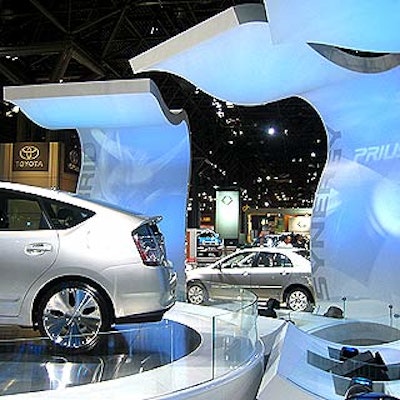
Shiny white undulating panels surrounded the Toyota Prius display at the New York International Auto Show at the Javits Center.
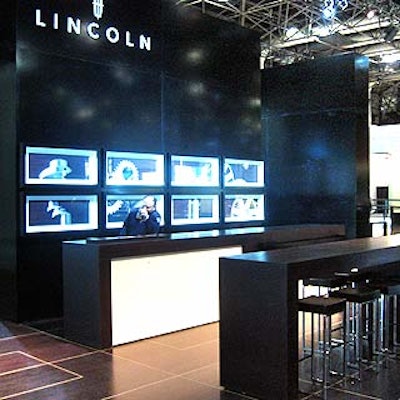
Lincoln created a sleek black and white environment to consult with future customers. The black floors were engraved with the Lincoln logo.
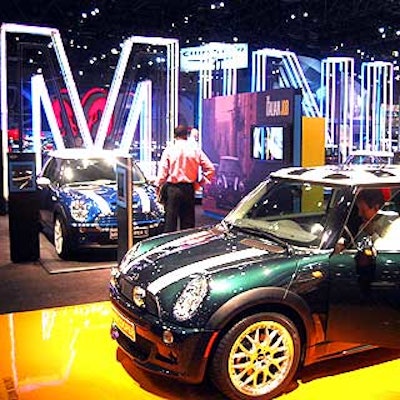
Mini showed off its cars with a giant, eye-catching sign and shiny white floor panels underneath the vehicles.

The Range Rover showed off its off-road prowess with a towering display that featured its SUV on a bed of rocks, splattered with mud, and loaded down with a bike and kayak on the roof rack.

















